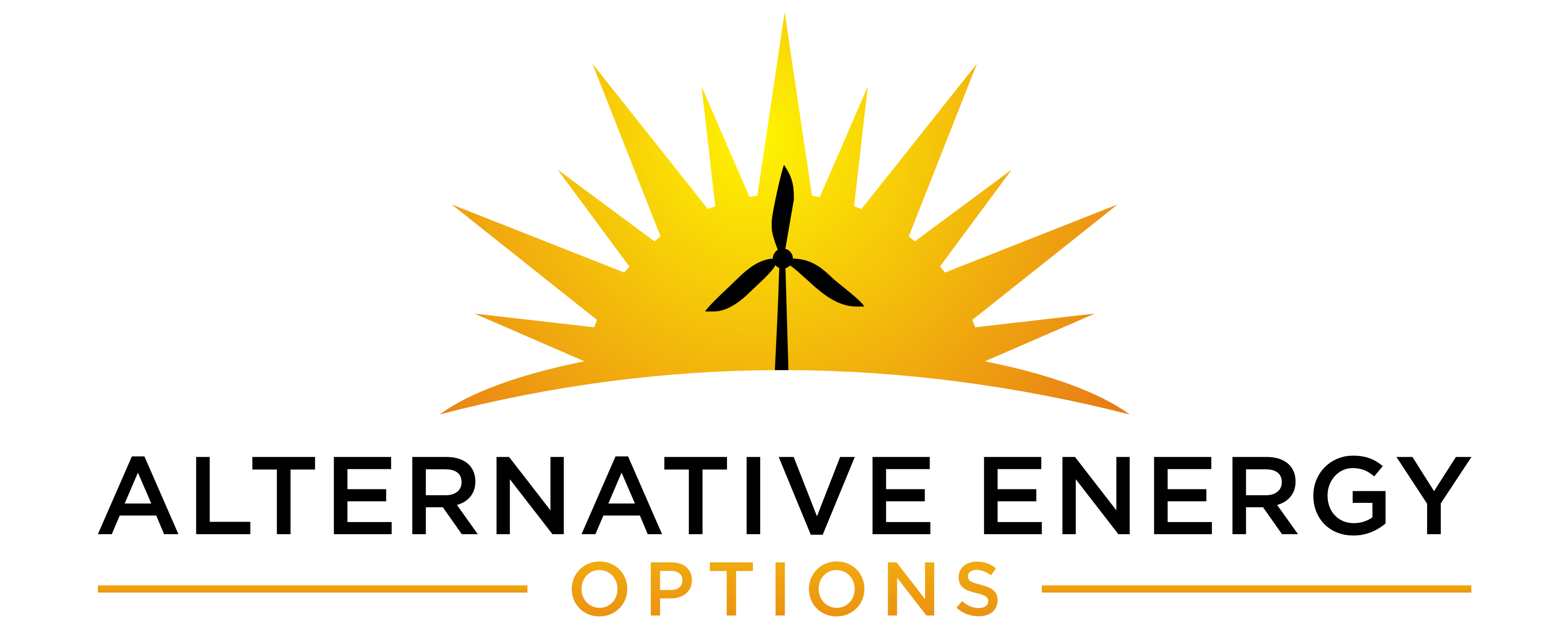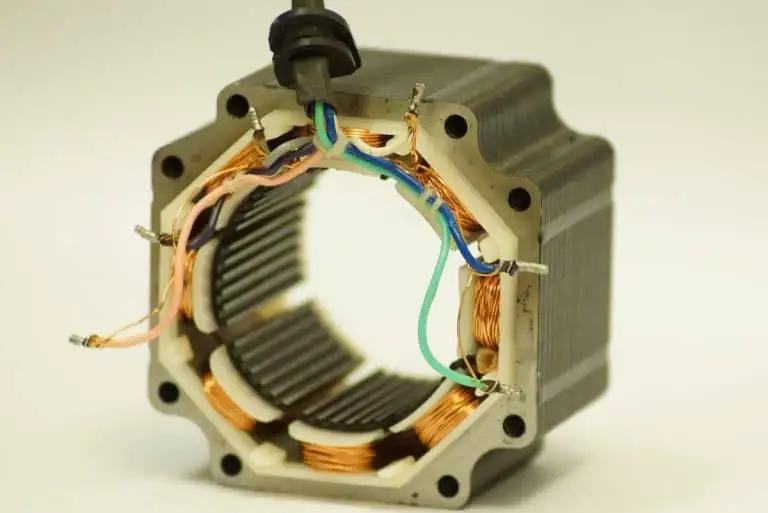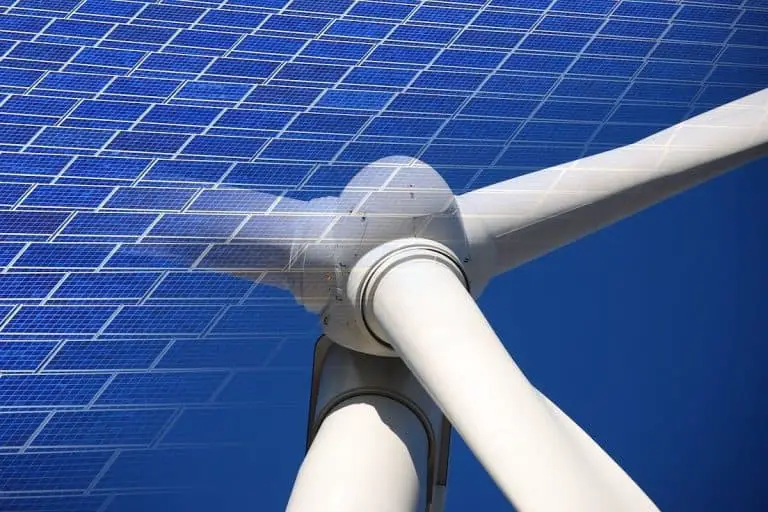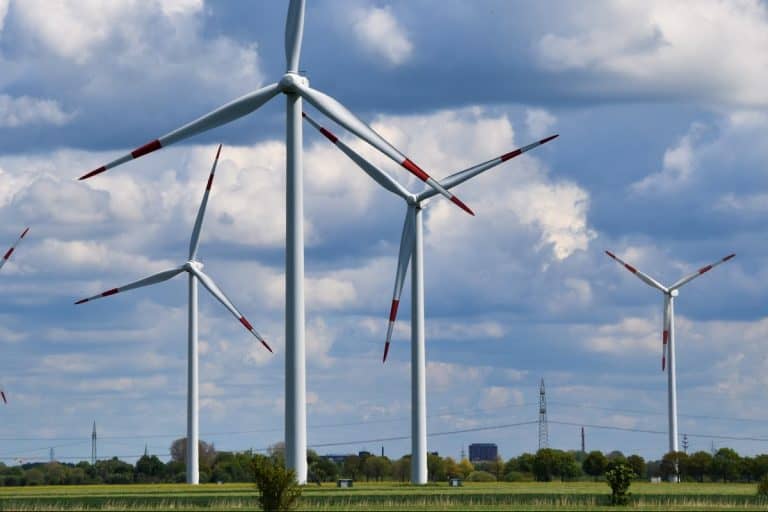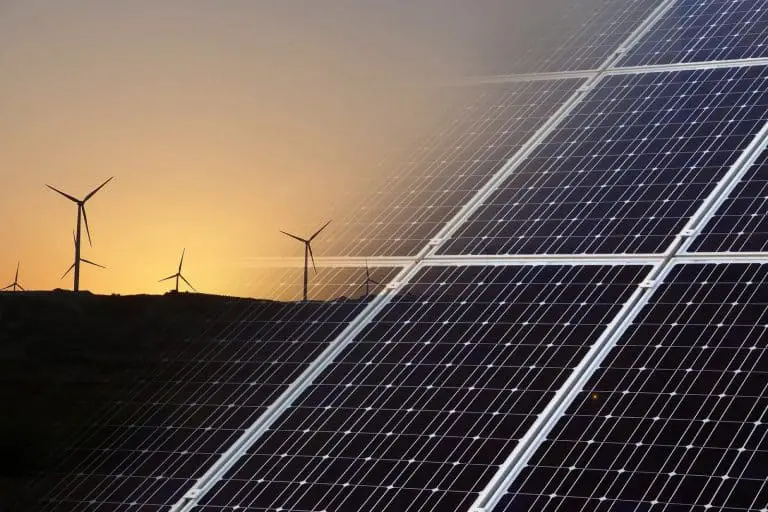Should Wind Turbine Blades Be Heavy or Light?
Wind turbine blades should be light as they are more efficient when they are lighter. It makes the wind turbines easier to assemble and disassemble while making them easier to turn, enhancing their performance. While lightweight systems with high material strength are ideal, reducing mass may cause an increased risk of structural failure.
A wind turbine, also known as a wind energy converter, is a mechanical device that converts kinetic energy created by the wind into electrical energy. Wind turbines work on a simple principle in which wind turns a turbine’s propeller-like blades around its rotor, spinning a generator to create electricity.
As with most mechanical systems, balancing parameters of strength versus weight for overall performance is common. This article will explore whether light or heavy blades contribute to better turbine performance, how wind turbines work, and the mechanical systems involved in their manufacture.
What Are the Advantages of Light Turbine Blades?
Wind turbines are designed to convert the wind’s power into electrical energy and are considered among the world’s fastest-growing energy sources. The blades of the wind turbine are far more efficient when they are light in weight.
Lightweight blades make it easier to assemble and disassemble the wind turbine structure and allow the blades to turn more smoothly and efficiently, enhancing their performance.
Wind turbines are a clean energy source and use very little water in the production of electricity. They don’t emit greenhouse gases or produce waste products. They are currently one of the fastest-growing renewable, environmentally friendly, and ecologically safe forms of energy sources in the world.
A one-megawatt turbine wind turbine can eliminate over 1,500 tons of carbon dioxide per year as opposed to one megawatt of energy produced from fossil fuels.
Wind turbines also produce cheaper electricity than fossil fuel-produced power, making it one of the lowest-priced renewable energy sources. While the turbine’s initial cost may be high, the energy harvested from the turbine will offset the installation cost and provide super-low cost energy for years.
What Are the Disadvantages of Heavy Turbine Blades?
While lightweight systems with high material strength are ideal, reducing mass may cause an increased risk of structural failure.
There are several disadvantages of heavier wind turbine blades, one being they are substantial pieces of mechanical materials and can have lengths of up to 180 feet. This, coupled with the fact that the entire wind turbine structure can reach over 460 feet, can make them rather unsightly.
Areas of high wind that produce the most electricity are generally quite remote and far from urban settlements and cities; however, wind turbines that are placed close to urban environments often cause mixed reactions to their presence.
Wind turbine blades that are heavy in structure and weight are more expensive to manufacture and assemble. The wind turbine location can mitigate this factor, such as being placed on high bluffs, ridges, or out in the ocean, but this also has limits due to accessibility and cost.
Large wind turbines that have heavy blades can also negatively impact local wildlife, particularly flocks of migrating birds, who get caught and killed by the blades. However, these challenges can be mitigated with consistent and proper monitoring strategies and optimized wind turbine design.
Another disadvantage of larger wind turbine blades is that the energy harnessed by them is intermittent as it is reliant on a natural source — when the wind is blowing, energy can be harnessed; however, if there is no wind, the availability of electricity is reduced.
What Is the Best Shape for Wind Turbine Blades?
The blades on a wind turbine play an essential role, and their shape, angle, weight, and the materials used can have a major influence on the efficacy of the turbine to produce electricity.
Wind turbine blades must have an aerodynamic profile to create lift and generate maximum torque to rotate the turbine and drive the generators. Therefore, the shape of a wind turbine blade is vital to the core functioning of the machine.
The optimal shape for a wind turbine blade is a curved, aerofoil-type blade as this shape produces higher rotational speeds, which is ideal for electrical energy generation.
The blade’s curved shape generates lift from low air pressure generated on the side with the most curve and high-pressure air forces on the other side of the blade-shaped aerofoil.
These two forces result in a lifting force perpendicular to the flow of air over the turbine’s blade. A well-designed turbine rotor blade will create the exact amount of lift and thrust to produce optimum air deceleration for better blade efficiency.
Wind turbine blades are shaped to generate the maximum power from the wind at the minimum construction cost. Slightly curved turbine blades can capture 5–10% more wind energy. The curved blades also operate more efficiently in areas that have typically lower wind speeds.
What Is the Optimal Speed for the Blades of a Wind Turbine?
The speed of a wind turbine determines the amount of electricity it can generate. If the blades rotate too slowly, a large amount of wind will be allowed to pass through undisturbed, limiting the amount of energy that could potentially be produced.
On the other hand, if the blades rotate too quickly, they act like a large flat rotating disc in the wind, which creates a huge amount of drag and limits the amount of energy that could be produced.
The optimal tip-speed ratio (TSR) is defined as the ratio between the speed of the blade tips and the wind speed. The TSR depends on several factors, including the shape of the blade, the number of turbine blades, and the turbine propeller’s design.
Engineers design modern wind turbines to spin at varying speeds, and high-efficiency three-blade turbines have optimal tip-speed ratios of six to seven.
Blades made with lightweight, composite materials such as aluminum create low rotational inertia, allowing the turbine to accelerate quickly if the winds pick up, which keeps the tip speed ratio more nearly constant.
Wind turbines that operate at a constant tip-speed ratio, or close to their optimal tip-speed ratio during strong gusts of wind typical in urban settings, improve efficient energy capture and conversion into mechanical and electrical energy.
Types of Wind Turbine Blades
The design, material, and weight of a wind turbine’s blades play a vital role in the wind turbine’s efficient functioning. Most horizontal-axis wind turbine models are built with either two or three blades attached to a propeller’s middle, known as a central rotor.
The long, slim wings of the blades rely on the wind to turn them by slowing the airflow down as it passes over one of their sides. The blades are pushed into a rotating movement by air currents moving over the blades, which convert the wind’s kinetic force into usable torque that turns a shaft.
The blades’ intricate design determines the speed of the blades, which cannot be allowed to turn too slow or too fast.
If the wind turbine’s blades move too slowly, too much wind passes through the blades without rotating them. If the blades move too fast, the blades become a flat spinning disc that causes a considerable amount of drag force to act against their motion.
Flat Wind Turbine Blades
Flat blades are the oldest type of blade and have been used in windmills for thousands of years. With the advent of modern wind turbine design and the introduction of the thin, curved air-foil during the 20th century, the flat-style form of the blade has fallen out of use.
These types of blades have both advantages and disadvantages. This type of blade design’s main advantage is that they are much cheaper and easier to make than curved blades. Flat blades can be made from all types of materials, including metals or plastics such as PVC.
One of the main disadvantages of flat blades is that they have very low efficiency in terms of power generation. As wind forces push against the blade, the blade pushes against the wind, creating a large amount of drag, resulting in a very slow rotation. Flat blades are often referred to as drag-based rotors as they rely on drag force to spin.
Curved Wind Turbine Blades
Curved wind turbine blades are the most common and widely used blades in wind turbine design. The design of these blades is similar to that of an air-foil or an airplane wing and functions by harnessing lift forces.
Design-wise, the top part of the blade is curved, while the bottom is flat. The curved part of the blade is designed to generate optimal aerodynamic lift forces, which, in layman’s terms, creates an arc that makes the wind move slower over the top of the blade.
What Materials Are Used to Make Wind Turbine Blades?
The turbine blade material plays a critical role in the efficiency of the machine to generate electricity. The blade material should have high stiffness, low density, and long fatigue life features.
Several types of materials are used to make wind turbine blades to allow the blades to work at maximum efficiency. In general, optimal materials in wind turbine blade design should meet certain criteria, including
- Wide availability and easy processing to reduce cost and maintenance.
- Low weight or density to reduce gravitational forces.
- High strength to withstand strong loading.
- High fatigue resistance to withstand cyclic loading.
- High stiffness to ensure the stability of the optimal shape and orientation.
- High fracture toughness.
- Ability to withstand environmental impacts
The most suitable material for wind turbine blade design manufacture is fiber-reinforced composites, which have high strength and stiffness and low density. Smaller blades can be made from light metals such as aluminum, however, will require frequent maintenance.
Currently, commercialized wind turbine blades are made from fiber-reinforced polymers (FRPs), which are composites consisting of a polymer matrix and fibers.
The long fibers in these materials provide strength and longitudinal stiffness, while the matrix provides out-of-plane strength, delamination strength, fracture toughness, and stiffness.
Glass and carbon fiber-reinforced plastics — GFRPs and CFRPs — are also good materials for blade design, as they have high fracture toughness, fatigue resistance, and thermal stability.
Wind Turbines & Wind Energy
A wind turbine is a modern mechanical version of a windmill that uses the power of the wind to create electricity. Wind energy is connected to solar energy and is caused by the sun’s uneven heating of the atmosphere, irregularities in the earth’s surface, or even the actual rotation of the earth.
Wind turbines are manufactured in a wide range of vertical and horizontal axes with blades that turn at a constant or variable velocity, depending on their technology.
Large wind turbines are the most recognizable and can generate enough electricity to light a city. Smaller wind turbines are also available for individual use, such as providing power to a boat or a caravan.
Three main types of wind energy can be captured by wind turbines: distributed, utility-scale, and offshore.
Distributed or “Small” Wind
This type of wind can be captured using single small wind turbines that are not connected to the main power grid and can be used to directly power homes, farms, or small businesses with electricity needs below 100 kilowatts.
Utility-Scale Wind
This wind is stronger and requires wind turbines that range in size from 100 kilowatts to several megawatts. These turbines are connected to the main power grid and deliver electricity directly to it; from there, it is distributed to the end-user via electric utilities or power system operators.
Offshore Wind
Offshore wind can produce the highest energy, and large-scale wind turbines are erected in large bodies of water, usually on the continental shelf, to capture this type of wind. Offshore wind turbines are larger and generate more power than land-based turbines.
How Does a Wind Turbine Work?
Wind turbines use the natural forces of wind to create electricity. The turbine is made up of a set of three blades, a nacelle, and a shaft. Tall, tubular steel towers that typically stand at least 260 feet tall support a hub with three attached blades and a nacelle.
The nacelle houses the shaft, gearbox, generator, and controls. The nacelle is located on top of the yaw (tail vane) bearing that allows it to rotate as the wind direction changes. Wind measurements are collected by components in the nacelle, which direct the turbine to rotate and face the strongest wind.
The nacelle also controls the blades, which are optimally angled or pitched to capture energy in the most efficient way.
Automatic Orientation
A wind turbine is automatically oriented to take maximum advantage of the kinetic energy of the wind. Data is registered by an anemometer and a vane that is installed at the top of the turbine.
Turning the Blades
When the wind flows across the blades of a wind turbine, aerodynamic forces from the rotor blades are created. This force is caused by a difference in air pressure across the two sides of the blade, creating lift and drag. The lift force is stronger than the drag, which causes the rotor to spin.
This spinning movement creates kinetic energy. The rotating blades make the shaft in the nacelle turn, creating mechanical energy. The rotation of the blades turns an internal shaft connected to a gearbox.
The blades begin to move with wind speeds of around 11.5 feet per second and reach their maximum power output at wind speeds of 36 feet per second. In very strong winds, around 82 feet per second, the blades are “feathered” to slow the wind turbine down to prevent excessive voltages.
Feathering occurs when the pitch angle of the blades is adjusted to approximately 90° to slow the turbine down.
The Gearbox
A rotor is a unit consisting of three blades set in the hub. The rotor turns a slow axis that is connected to a gearbox that increases the turning velocity from 13 to 1,500 revolutions per minute.
The gearbox increases the speed of the blade rotation by a factor of 100. This additional speed spins a generator in the nacelle, which converts this kinetic energy into electrical and mechanical energy.
Generation
The gearbox connects to the generator, either by a direct-drive turbine or through a shaft and a series of gears. The gearbox speeds up the rotation and allows for a physically smaller generator.
Energy is transferred through a fast axis that is connected to the generator, which produces the electricity. This translation of aerodynamic force to the rotation of a generator creates electricity.
A modern wind turbine will start to generate electricity when wind speeds reach six to nine miles per hour (mph), which is known as the cut-in speed. Should the wind blow as hard as 55 miles an hour, the turbines will automatically shut down to prevent equipment damage.
Modern wind turbines can generate usable amounts of electricity over 90% of the time in any given year.
Types of Wind Turbines
The two basic types of wind turbine are horizontal-axis turbines (HAWT) and vertical-axis turbines (VAWT).
Horizontal-Axis Turbines (HAWTs)
Horizontal axis wind turbines (HAWTs) are the most common type of wind turbines used today. Horizontal axis wind turbines usually have two or three aerodynamic blades, which are also known as air-foils, that operate at high blade-tip speeds.
These aerodynamic blades are fitted to a rotor, which can be positioned either upwind or downwind. HAWTs with upwind rotors need a tail vane, also known as a yaw, to help them orient into the wind.
Downwind rotors have cone-shaped blades that allow the turbine to orient into the wind with the help of the yaw.
While downwind rotors may seem more cost-effective without the addition of the yaw, it has been found that they have been known to “walk” around when trying to line up with winds during low-speed conditions, diminishing low wind speed energy production.
Modern horizontal-axis wind turbines use an aerodynamic lift force to turn each rotor blade, which is similar to the way an aircraft flies. When wind is present, fast-moving air flows around both the upper and lower portions of a blade.
Then, due to the curvature and shape of the blade and a long fetch length, air passes over the blade’s top more quickly than the lower portion, creating a pressure difference between the blade’s top and bottom sides. This pressure difference produces a force in the direction of the top of the blade.
Vertical-Axis Turbines
A vertical-axis wind turbine (VAWT) is the second type of wind turbine that is used to create electrical energy from the wind. This type of turbine is built differently than the horizontal-axis wind turbine in that the main rotor shaft is set diagonally or transversely to the wind, and the components like the generator and gearbox are located at the base of the turbine.
These types of turbines have helically shaped blades known as Gorlov blades, which were named after their inventor, Alexander M. Gorlov, a professor of Northeastern University.
The helically-shaped blades were invented by Golov after early blade designs by Savonius, and others were found to have significant torque variations during each revolution.
The diagonal arrangement of the blades on a vertical-axis wind turbine means the turbine does need to be pointed into the wind and, therefore, removes the need for wind-sensing and orientation mechanisms. The close location of the generator and gearbox to the ground also makes for easier servicing and repairs.
Vertical-axis wind turbines (VAWTs) are not as widely used as horizontal-axis wind turbines; however, they are the preferred choice of wind turbines for distributed generation devices in an urban environment.
There are several sub-types of vertical-axis wind turbines (VAWTs), including Darrieus wind turbines, Giromills, Savonius wind turbines, and parallel turbines.
Darrieus Wind Turbines
Darrieus Wind Turbines are also known as “egg-beater” turbines, named after the French inventor Georges Darrieus. These turbines have a very low starting torque and generally require some external power source.
Giromill Wind Turbines
Giromill wind turbines are a subtype of the Darrieus type turbines and have straight blades. These cyclo-turbines are self-starting and have a variable pitch to reduce the torque pulsation. A variable-pitch rotor has blades that can be rotated around a long axis to change the blade pitch.
The advantages of the variable pitch include a lower blade-speed ratio, which lowers blade bending stresses, a high starting torque, a higher coefficient of performance, a wide, relatively flat torque curve, and greater efficiency in turbulent winds.
Savonius Wind Turbines
Savonius Wind Turbines are drag-type turbines with two or more scoops that were invented by the Finnish engineer Sigurd Johannes Savonius in 1922. This type of turbine has one of the simplest designs, where two or three scoops catch the wind, and the differential drag causes the Savonius turbine to spin.
Parallel Turbines
The parallel turbine is another subtype of vertical-axis wind turbine that has a design similar to a centrifugal fan or a crossflow fan.
Why Do Wind Turbines Have Three Blades?
Historically, windmills have always had four blades, but the majority of modern wind turbines designed and manufactured today have three blades. Two-bladed turbines tend to wobble when they turn to face the wind because their angular momentum in the vertical axis changes depending on whether the blades are vertical or horizontal.
The angular momentum on wind turbines with three blades stays constant because when one blade is up, the other two are pointing at an angle. So the turbine can rotate into the wind smoothly and work more efficiently to create electricity.
Where are Wind Turbines Most Efficient?
Wind turbines are manufactured in a variety of sizes and axes and can be used for different purposes, from providing electricity on a large urban scale to charging batteries for vehicles.
The smallest turbines produce small amounts of electricity to charge batteries that will supply auxiliary power for boats and caravans. They are also used to power traffic lights and warning signs.
Wind can be combined with solar energy to create electricity by adding a wind turbine to a solar panel system. The output of a wind turbine can be connected to the input to a solar inverter as long as the output of the wind turbine is DC and of the correct voltage or less.
A solar charge controller, however, cannot be used for a wind turbine. Even though both solar and wind charge controllers protect the battery from overcharging, a wind charge controller needs to dump its excess load while a solar charge controller does not.
Larger wind turbines can be used to provide power to domestic households, businesses, and other urban utilities directly or via the main power grid. Clusters of large wind turbines are known as wind farms and are becoming an increasingly important source of intermittent renewable energy.
Many countries, such as China, the United States, Germany, and India, are leading the way in the use of wind farms as part of a strategy to reduce the reliance on fossil fuels.
Final Thoughts
Wind turbine blades made with lightweight composite materials are more efficient as they are easier to turn and more efficient.
Wind turbines use the natural forces of the wind to convert kinetic energy into electrical energy. The design of a wind turbine’s blades is essential to the optimal performance of the wind turbine, including the type of blade, the material from which it is made, and the weight of the blade.
